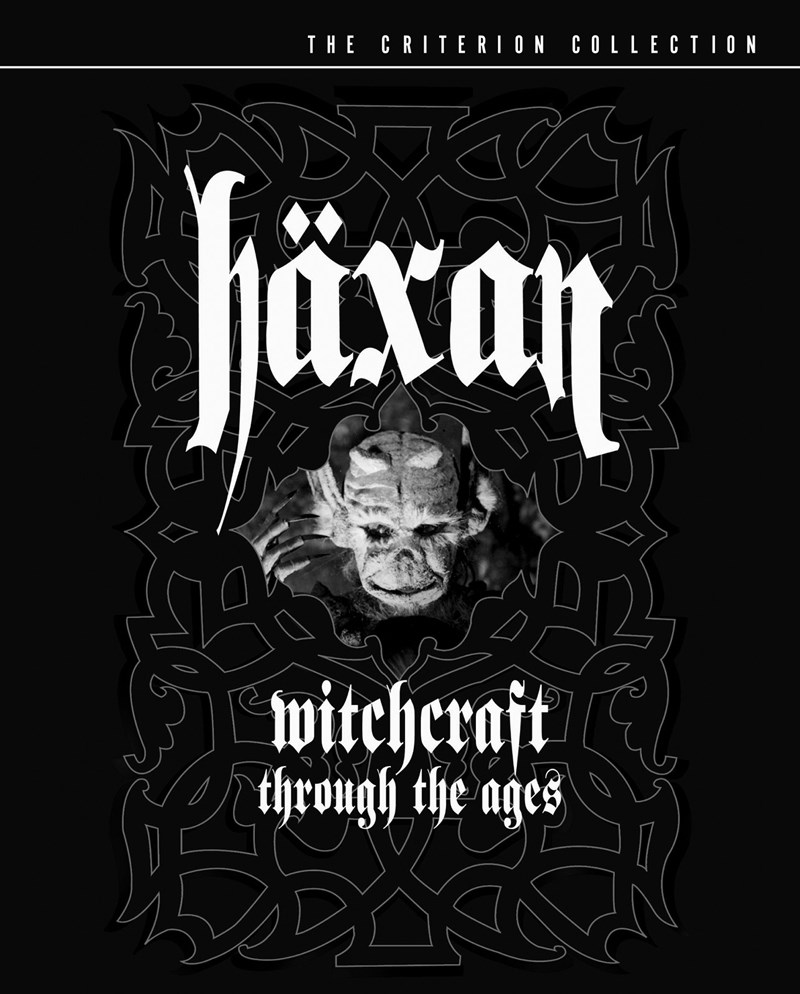The great thing about the public domain is that now, in the internet age, it has become increasingly easy to find material which has lapsed into it. After decades upon decades of silent films getting lost, the digital era has given them a second life on streaming services.
Haxan: Witchcraft Through the Ages is a 1922 film about witches. Specifically, it’s a film about how witchcraft wasn’t really a thing, decrying the practice of killing women who were a bit weird. It’s still trying to be a bit sensational (the depiction of the devil as a man in heavy makeup is somewhere between creepy and hilarious) and the content is salacious enough to get people into the seats even while it purports to be a piece of education. It goes between a man pointing at historic art with a stick and dramatization of the story of a family destroyed by accusations of witchcraft, as all the women are eventually burned at the stake. There’s something darkly comic about a priest demanding a woman cry on cue to prove she’s not a witch – witches, apparently, being unable to cry, though the rules about what witches can and cannot do were constantly shifting – and then claiming that witches have secret ways to look like they’re crying when she can cry later in the film.
Most interesting is the final part of the film, where the filmmaker equates witchcraft with the now equally discredited affliction of ‘hysteria,’ a catch-all mental illness that covered all instances of a woman acting a bit weird. At the time, it was viewed as a valid diagnosis, and it’s even trumpeted as the triumph of reason over superstition, even if people currently practicing medicine would be horrified by what they see on screen. It’s fascinating as a document, where the logic and reason of 1922 is now seen as illogical and unreasonable, as we learn more about mental illness and about the attitudes of the time. A cold shower had replaced a burning stake for any woman viewed with suspicion.
It’s a valuable historic document, and the world would be a worse place if it wasn’t easily found. Since it’s in the public domain now, several copies exist on YouTube! Pick your favorite and learn a little bit about attitudes towards women for centuries.
— Devin Wilger
Old west revisited
If you grew up being excited for Sunday evenings because that was the night Bonanza aired on television, you likely enjoy a good western.
Back in the days of Bonanza (it aired from 1959 through to 1973), a range of hit westerns (Gunsmoke, Rawhide, The Rifleman) were the norm on television. New shows of the genre are rare these days. The western has been relegated to the occasional big screen movie, and a rare miniseries on the tube.
Or you can head to the ‘Net and find a web series such as Thurston.
“Thurston is a Western drama about the inhabitants of a remote mining town and their struggle for survival in the rugged 1880’s Kansas Ozarks. Some residents are fleeing troubled pasts. Others are pursuing dreams. All keep carefully guarded secrets. As dangerous forces move in, the residents must determine who amongst them is friend and who is foe as they fight for their lives and the settlement they now call home,” detailed the shows website www.thurston-series.com.
The series lasted three seasons, with the typical show being around 10-minutes long, so you can binge watch a season’s worth of shows without it being an overly long outing.
The series has a cast of more than 20 over the three seasons and they do a good job of their roles for the most part. That is particularly true of Catherine Frels as Maggie Callaway and Garry Westcott as Marshall Perry Robinson in the main roles.
Susannah Wells should also draw a nod as Rosie MacGillicuddy.
The series, created and written by Kathryn O’Sullivan, is a touch up and down. A few roles are a bit too over-the-top (Dave Gamble as Judge William Richards comes to mind) and the story drifts to points where you can see a hole or two, but it remains a story you want to see more of.
Director Paul Awad keeps the story moving in the right direction, with questions hanging at the end of each episode that you want to see resolved.
It also helps that the costuming and setting is bang on in terms of a western, leaving you feeling as though you are back in the genre’s heyday.
Thurston is not a classic like Bonanza, but it is still worth the time for a western fan to tune in.
— Calvin Daniels




